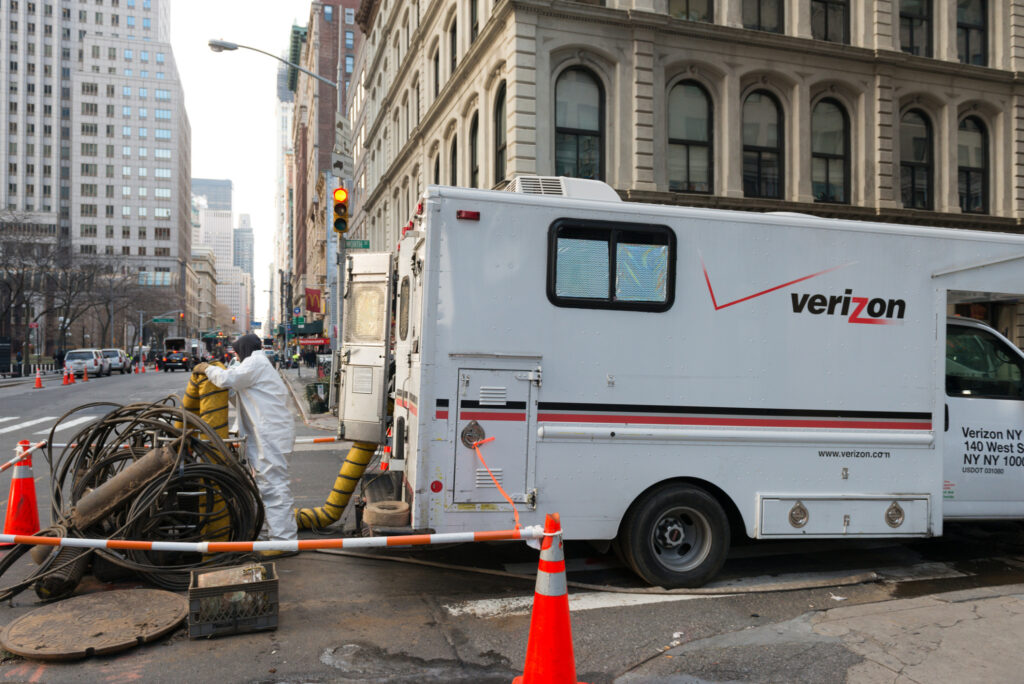Municipal, telecom, and delivery fleets explore sustainable trucking
Fleet managers walking the halls of the Green Truck Summit in Indianapolis shared a common goal of reducing emissions. But the journey to sustainable trucking can still include some unique challenges depending on the application.
Representatives from municipal, telecom, and delivery segments offered insights into that very thing.

Municipal: City of Indianapolis
The municipal fleet serving Indianapolis, Ind., has been reducing emissions for years. Its first autogas-powered sedans emerged in 1992. Some E85 and biodiesel was poured into tanks in 2003, and the first electric and compressed natural gas (CNG) vehicles came in 2011.
Then came 2012. Bill Rogers, administrator of the fleet services division at the department of public works, refers to that as “our big year”. It’s when an executive order was issued, setting 2025 as the year when all non-pursuit vehicles in the municipal fleet would need to run on an energy source other than petroleum-based fuel alone.
Things quickly accelerated after that. The municipality leased 212 plug-in hybrids and electric vehicles between 2014 and 2016. There was an admitted road bump in 2019, when that lease was dropped, but between 2019 and 2022 other Ford and GM hybrids were added to the mix.
“We had 225 vehicles and only 43 charging stations,” Rogers said, when asked why the first leasing contract failed to work. “I’ll just leave it at that.”
“Range anxiety is huge,” he admitted, referring to personnel who hop behind the wheels of zero-emission vehicles. But pilot programs, ride-and-drives, and outreach programs have helped. “You’ve got to do that if you’re a municipality, if you want people on board,” he said.
The pilot programs also help to identify key operational procedures moving forward. For example, the fleet switches between a B5 blend of biodiesel in the winter and a B20 in the summer. When it didn’t switch back to B5 during one recent winter, maintenance teams ran into gelling fuel that clogged filters.
Offering advice for other managers who want to green their fleets, Rogers stressed the need to base budgets on telematics data. “Route optimization is the key enhancer,” he said, referring to the way revised routes can support the shorter ranges of battery-electric vehicles.
But above all, he stressed that no single solution will meet every need.
“Every municipal entity has its own unique challenges and solutions,” Rogers said. “As you know, when it comes to alternative and domestically produced fuel and technologies, there is not one silver bullet.”

Telecom: Verizon
The size of Verizon’s fleet is staggering by every measure. The telecom giant uses 30,000 vehicles and mobile equipment pieces, ranging from Class 2-8. There are line trucks, cable placers, digger derricks, heavy-duty dumps, tractors, sedans, vans, pickups and light aerial buckets to consider.
“For the most part, we’re doing all we can for what’s available and viable,” said Jimmy Pang, senior manager – fleet operations, engineering and development, referring to sustainable business initiatives.
Like Rogers, Pang emphasized the need for telematics to optimize routes when choosing new fuel sources. Besides, Pang said, the greenest mile is the one that is never traveled.
Verizon’s green initiatives are not limited to alternative fuel and electrification. either. Combustion-driven vehicles have been calibrated to adjust shift points, idle rpm, and throttle inputs. Auxiliary hybrid-electric systems, incorporating two batteries like a power pack, are powering auxiliary equipment like booms and light buckets.
The telecom provider has already purchased hundreds of light-duty electric vehicles, but Pang said other rollouts will still need to be based on the infrastructure supporting individual locations. “How much power would I be drawing from the facility on a month basis, on an instantaneous basis,” he asked. “How much [power] is available in that garage, so I can kind of prioritize?”
There will need to be some sort of logic that manages charging based on the number of vehicles that are plugged in, he added. One vehicle may be able to draw 12 kilowatts without any problem. One hundred vehicles needing a charge at the same time is another matter entirely.
The challenges of electrifying the Verizon fleet include everything from vehicle availability to grid capacity and resilience, and the power that can be exported for auxiliary equipment such as manhole blowers, compressors and pumps, Pang said.
“What do you have on the vehicle that you need?” he asked. “What do you have on the vehicle that you don’t need?”

Delivery: Ferguson Enterprises
Ferguson Enterprises has realized several technical gains to help its 4,900 Class 1-8 vehicles move plumbing and heating products to contractors throughout North America. But while electric vehicles are on the horizon, there are still plenty of questions to address, ranging from costs, to charging infrastructure, and the all-important influence on payload weights, said fleet analyst Alexis Reece.
“You’re going to have to work with utilities, consulting, third parties, even construction resources,” she said. In addition to new layers of maintenance support, there’s a need for analytics and driver training alike.
No matter what energy source is used, she stressed the importance of using data loggers, telematics, fuel data, and information about site infrastructure to determine exactly where to introduce pilot projects. That guided choices for the 30 electric vehicles Ferguson Enterprises has on order.
Vehicle choices can be influenced by factors such as capacity, goods being hauled, road grades, and whether the trucks are full all the time, Reece said. Her fleet’s goal is to ensure any trucks stay within 80% of their maximum range during a workday. Anything beyond that can compromise the actual ranges to be expected.
“Then you’re going to have the driver freaking out at the side of the road,” she said.
“We’re not trying to make them adjust to the truck. We’re trying to make the truck work for them.”
Have your say
This is a moderated forum. Comments will no longer be published unless they are accompanied by a first and last name and a verifiable email address. (Today's Trucking will not publish or share the email address.) Profane language and content deemed to be libelous, racist, or threatening in nature will not be published under any circumstances.
Maybe someday the whole truth will come out. To fix emissions you will have to try a whole lot harder. Immigrating more people brings more carbon then on top of that the plastic you make these vehicles out of are a form of carbon, then to get any free energy will take carbon. So when you have 40 trucks waiting to charge the government is loosing money by the minute if you think that will ever happen you need to go back to school. Next people don’t have patents now what will happen when they can’t get charge or the vehicle runs out of charge on the freeway that will be another problem.
Well maybe we should talk about the cost if the government is loosing at the pump they will be getting it from somewhere like the cost of the vehicle if it was $50,000 now it will be $150,000 so don’t think you will get off easy.
Next is the computer they put in these vehicles that will blow your mind because they will not only track who is driving who is in the vehicle but where you are going and if I wouldn’t know any better they will track your conversation.
So after all that how about we talk about microwaves that these vehicles put out and how they will effect climate change microwave is a form of electro force that has heat attached to it so as it heats it doesn’t cool , the heat stays on like you computer, phone,TV the wires coming into your home, they conduct more heat then many would think. We have nuclear power plant but nowhere for the nuclear waste, we have windmills but they don’t tell you how much damage they do to the fault lines below the ground.
In time to all that might read this if you think anything the government has invested in will help you, stop thinking these will only fill the rich people’s pockets and help the politians pockets. So sad we live in place where the government takes advantage of the poor to fill the rich politicians bank accounts.